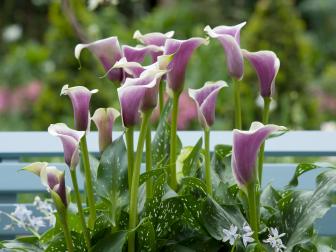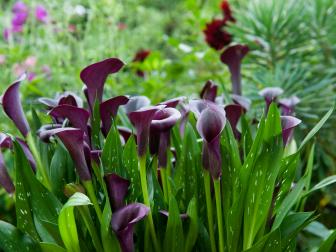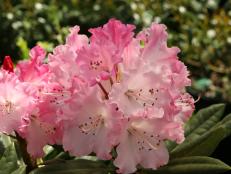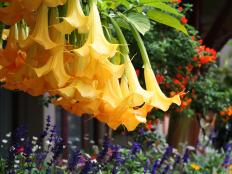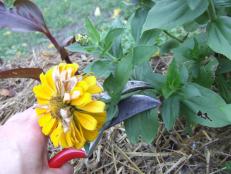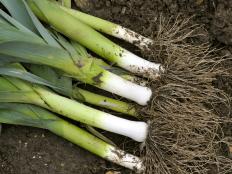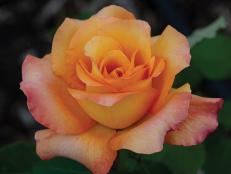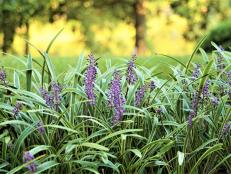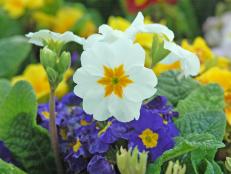How to Grow Calla Lily Flowers
Calla lilies are the ulimate cut flower, a long, sleek, modernist bit of botanical beauty that are easier to grow then they look. Here's how to grow Georgia O'Keeffe's favorite flower.
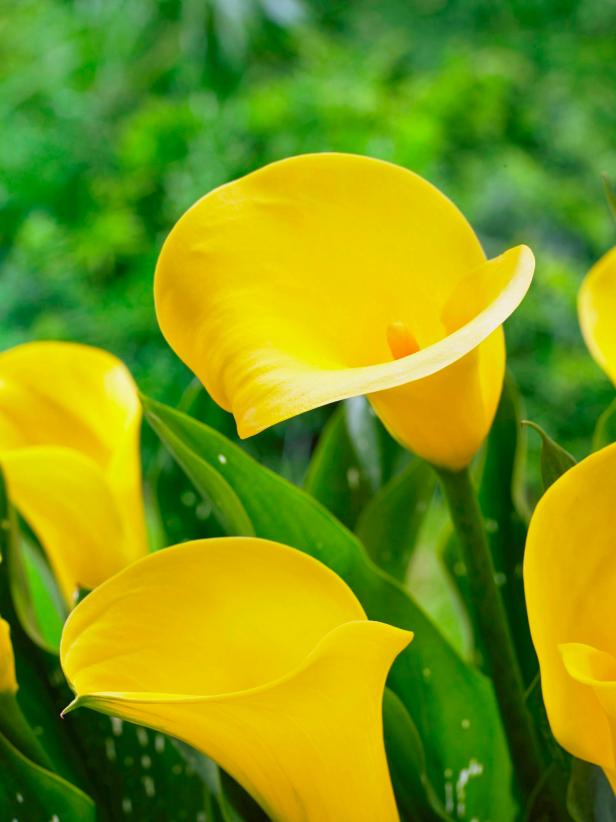
Image courtesy of Longfield Gardens

Calla lilies make the best bouquet flowers. Their sleek, elongated blooms are so very elegant and art deco looking. Unlike frilly hydrangeas, callas are modern and commanding. They’re a fixture in wedding bouquets for brides who want a touch of minimalism with all that lace and taffeta.
Georgia O’Keeffe painted calla lilies, highlighting their modernist lines and making callas as iconic to fans as Van Gogh did with sunflowers. But despite the legendary calla lily’s exotic looks, it’s pretty easy to grow. Callas can add a touch of the exotic to your garden. Here's what you need to know.
Calla 101
Okay, first off, calla lilies aren’t really lilies. Botanically speaking, calla lilies are in the arum family, cousin to plants we grow for their leaves — philodendron, caladium, peace lily (also not technically a lily) and anthurium. Those colorful parts we think are petals on calla lily blooms are actually leaves. The calla’s real flower is on a spike inside that whorled leaf we call a flower petal.
Easy-Growing Plants That Love Water 13 Photos
Got a wet spot in your yard? Turn it into an eye-catching garden with plants like calla lily that thrive in moist soil.
Lily or no, callas are gorgeous and that’s why we grow them. They hail from South Africa, where they occur in the wild as white blooms. With human help, there are hybrid callas with blooms that range from deep purple to yellow to mango orange. They grow in clumps 24” to 36” tall.
Botanical Name: Zantedeschia aethiopic
Common Names: Calla lily
Hardiness Zones: 8 to 11
Bloom Time: June to July
Planting Calla Lily
Can Calla Lilies be Planted Outside?
Callas are grown as tender perennials or annuals in most places in the country. If you live in Zone 9 or higher (places like Florida, Southern California, Hawaii, or the Gulf Coast), you can leave them outside year round. Otherwise callas are not winter hardy.
- Callas are grown from tubers (like bulbs, also called rhizomes).
- Plant them between February and June, burying them 3" to 4" in the soil, either directly into the garden or in containers.
- They like moist, fertile soil. White calla lilies are semi-aquatic and need damp soil at all times. Their colorful hybrid kin, on the other hand, need higher ground and drier conditions or they’ll get root rot.
- They can grow in full sun to partial shade. You’ll get more blooms in full sun, but in warmer climates you also may get leaf scorching in the hot afternoon sun. Afternoon shade is best in hot, sunny areas.
All About Flower Bulbs 13 Photos
Stoke—or start—a love affair with bulbs by learning about different types of flower bulbs.
Growing Calla Lily
- Callas bloom about eight weeks after you plant the rhizome.
- Keep the soil consistenly moist. Don’t let it dry out between waterings.
- Feed with a fertilizer every two weeks while it’s blooming.
- Remove stems after blooms fade.
- Mulching the rhizomes can provide winter protection if you’re in the cooler end of its hardiness zones.
- Propagation: Calla lilies grown outside will form large clumps you can divide into smaller pieces and replant. Each clump will grow a new calla.
- Winter Protection: Before the first frost, dig up callas planted in beds, let them cure for 2 to 3 days in a warm dry place, and store them over the winter in a dry, 55-degree environment. If they’re in a container, bring the whole pot indoors. Cut off their stalks, and withhold water and light for eight weeks so they can rest. In early spring, wake them up with light and water.
Growing Indoor Calla Lilly
If you’ve gotten a potted calla as a gift, treat it as a houseplant.
- Keep the soil moist, but not soggy
- Give it bright, indirect light
- Feed it monthly with liquid fertilizer.
- Keep it away from HVAC vents that will dry out its roots and leaves.
- Cut off leaves and stalks to soil level after it dies back.
- Dig up bulbs and let them rest in a cool, dark area while they are dormant. Or leave them in the pot and let them rest. Don’t fertilize or water them.
- Repot the bulbs after they rest, at the start of the new growing season.
- Callas grown indoors won’t form clumps of new tubers, so your plants will slowly lose vitality. Those tubers can only come back so many times, no matter how well you care for them.
Pests and Problems
Rhizome rot. Too much water will rot the calla’s roots. Keep them in well-drained soil.
Japanese beetles. What isn’t prone to these pests? Pick them off when you see them and drown them in a bucket of water. Keep away from pesticides, because you don’t want to kill good bugs like bees.
Aphids. Good ol’ plant lice will get on your callas. Spray them with neem oil when you see them.
Toxicity: Calla lilies are dangerous to pets if they eat any part of the plants.
Recommended Varieties
‘Treasure’ is a hybrid that produces saffron-colored blooms. This groundbreaking type began the trend for colorful callas back in the 1990s.
‘Captain Amigo’ is a hybrid that produces yellow blossoms on speckled, lance-shaped leaves.
‘Picassso’ is a bicolor hybrid that produces creamy white flowers with rosy purple throats, atop heavily speckled leaves.
‘Ascari’ is a hybrid that produces a gold bloom drenched in deep purple.
‘Odessa’ produces black flowers, a hybrid that grows as many as 15 blooms per bulb.
‘White Forest’ is the original calla lily from South Africa. Not a hybrid, it likes wetter soil and works as a pond plant.
Colorful Calla Lily Varieties 14 Photos
Calla lilies come in a rainbow of colors beyond the white garden variety. The head grower at Stargazer Barn, a source of fresh-cut callas, shares tips about these beautiful blooms.
Garden Design Ideas
- Plant them in containers so you can bring them indoors in the winter.
- Use white calla lilies in water gardens or on the edges of ponds. You can plant them in up to 12 inches of mud at the bottom of a pond.
- Plant them in a bog or rain garden. The white ones are ideal for this.
- Use them in the middle of a border where you need a mid-sized plant.
- Grow them as a houseplant. They’re happy by a sunny window or on a patio.
- Plant callas with dahlias and gladiolus for a cutting garden that will last until frost.
- Plant with other white bloomers like datura, coneflowers, liatris and hollyhock for a moon garden.






